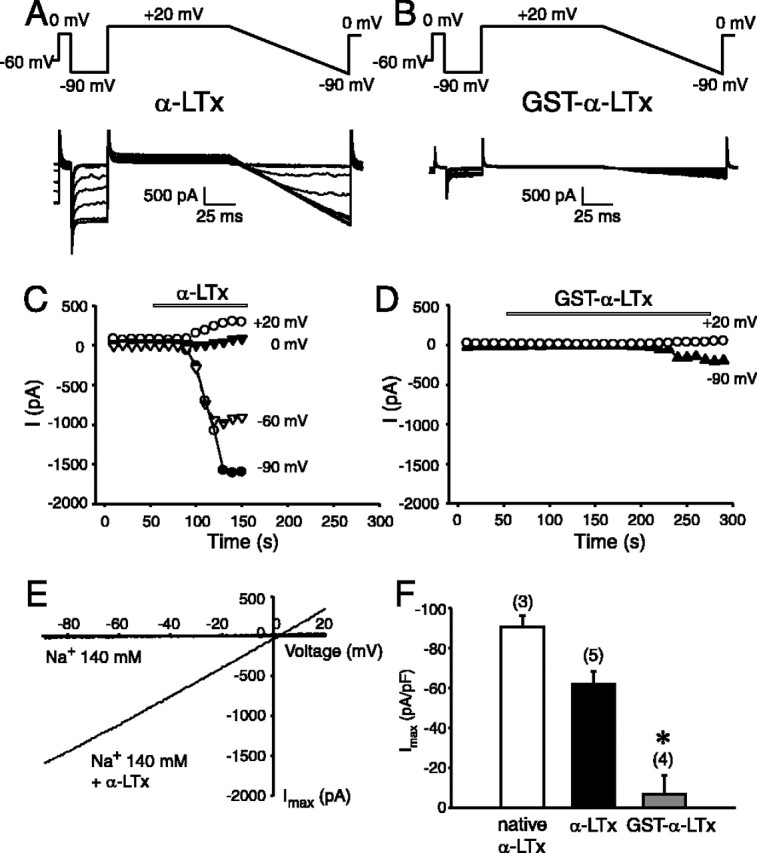Figure 5.

The abilities of recombinant α-latrotoxins (α-LTx, GST-α-LTx) to induce cation current on cells expressing neurexin 1α. A, B, Typical representatives of superimposed current trances recorded during episodes of stimulation before and during application of 5 nm α-LTx (A) and 5 nm GST-α-LTx (B). The standard stimulation command protocol is indicated on the top panel. The cell at a hold potential of -60 mV was depolarized to 0 mV, hyperpolarized to -90 mV, and then +20 mV followed by a ramp from +20 to -90 mV. Calibration: 500 pA, 25 ms. C, D, Time courses of development of toxin effect in the same cells as in A and B. The current amplitudes were measured at the end of the pulses at +20, 0, -60, and -90 mV, as indicated. The recordings were performed in the standard extracellular solution containing 140 mm NaCl. Applications of the recombinant α-LTx (C) or GST-α-LTx (D) are indicated by the bar. E, Current-voltage relationship of αLTx-induced cation current recorded during the voltage ramps before and during α-LTx effect. Notice the large increase in slope in the presence of αLTx. F, Comparison of the potency of recombinant α-LTx with native α-LTx. The maximal current amplitudes were measured at -90 mV and normalized with the cell size. The data are presented as mean ± SEM. The number of experiments is indicated on the top of the bars. The difference between the effect of GST-α-LTx and the other forms is statistically significant (*p < 0.05).
